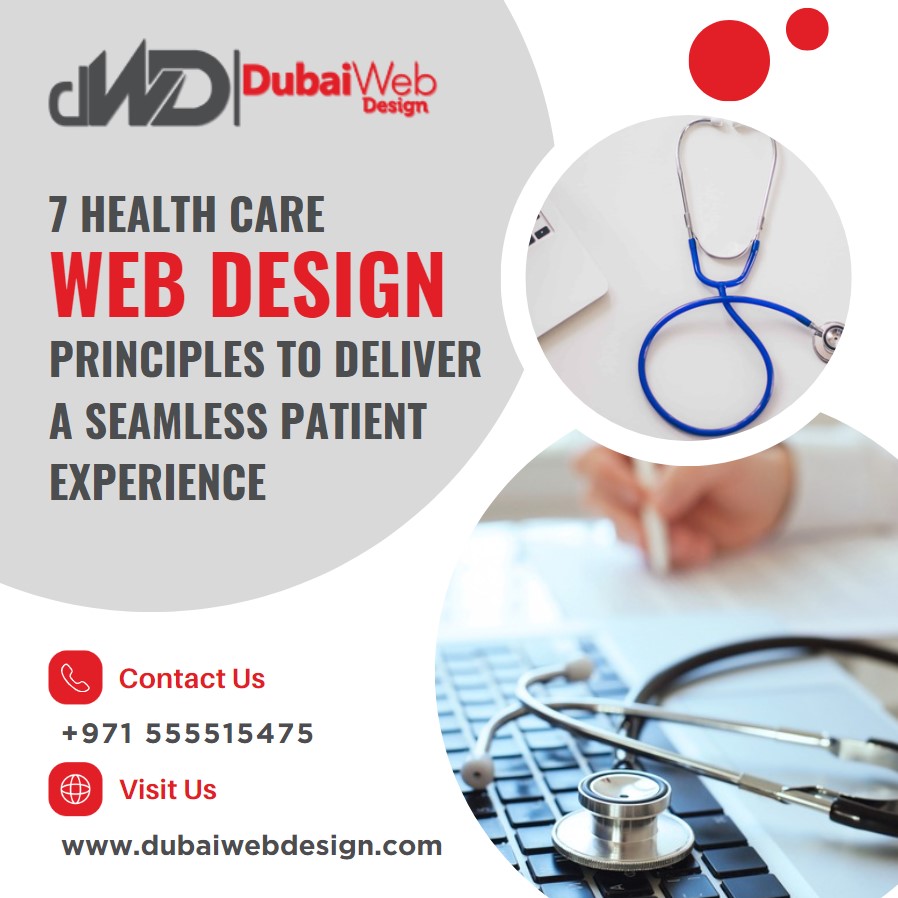7 Health Care Web Design Principles To Deliver A Seamless Patient Experience
7 Health Care Web Design Principles To Deliver A Seamless Patient Experience In today’s world with computers and phones everywhere, doctors and hospitals are changing to help patients online. Moreover, one important part of this change is how they make their websites. Also, a good healthcare website doesn’t just give information. Moreover, it also helps patients have an easy time finding what they need. People want to be able to book appointments and see their medical records without any trouble. To make this happen, healthcare websites need to follow certain rules for how they’re designed. Also, these rules are made to make sure patients and doctors can use the website easily. In this article, we’ll talk about seven important rules for making healthcare websites that focus on what patients need.
Use Centered Design
Making a good healthcare website starts with thinking about the people who will use it the most – the patients. Moreover, this means we need to understand what patients want and how they like to use websites. Also, we do this by asking patients questions, talking to them, and testing the website to see if it’s easy for them to use. When we focus on what patients need, we can make sure the website has the right things. It is also important to ensure that it works smoothly for them.
Clear Navigation
Using a healthcare website should be easy for patients to find what they need. Also, the menus and buttons should be clear and simple to understand. So, patients can quickly get to where they want to go. Moreover, it’s important to group things logically. Putting all the information about services together or making it easy to find doctors also helps. Also, having a search bar helps patients find exactly what they’re looking for without any trouble. Moreover, this makes it easier for patients to use the website and find what they need fast.
Mobile Responsiveness
Nowadays, lots of people use their smartphones or tablets to look up health information and services. So, it’s really important that healthcare websites work well on these devices too. Moreover, this means the website should look good and be easy to use whether you’re on a computer or a phone. Also, using responsive web designing company Dubai makes sure that the website adjusts itself to fit the screen size. So, whether it’s a big computer screen or a small phone screen, the patients can get a seamless experience. Also, this makes it easier for people to find what they need, no matter what device they’re using. Moreover, it also shows that the healthcare provider cares about making things convenient for patients online.
Accessibility Compliance
Making sure everyone, no matter their abilities, can use a healthcare website is really important. Moreover, this means following rules like the Web Content Accessibility Guidelines (WCAG) to make sure the website works well for people with disabilities. Those who can’t see well, hear well, move easily, or understand things easily, can benefit from it. Some things we do to make websites more accessible include adding descriptions for pictures. Using colors that are easy to see and letting people navigate using just the keyboard make the web design effective. When healthcare websites are accessible, it means everyone can get the important health information and services they need.
Secure Portals
Patient portals are like a special area on a healthcare website where patients and doctors can talk to each other. Also, you can use them to schedule appointments, refill prescriptions, see test results, and send secure messages. Moreover, making a patient portal that’s easy to use and keeps your information safe is really important. We use strong security measures, like special logins and encryption, to make sure only you and your doctor can see your private information. Also, making the portal easy to use with clear instructions helps you take charge of your health. You can also keep everything private and secure.
Engaging Visual Designs
The way a healthcare website looks is really important for how easy it is to use. Also, this includes things like the colors, the words, the pictures, and how everything is laid out. Choosing colors that look trustworthy and professional helps patients feel comfortable using the website. So, using clear and easy-to-read fonts is important too, especially for people who have trouble seeing well. Using nice pictures that patients can relate to helps make the website feel friendly. This also shows what the healthcare provider is all about. Also, making sure everything is laid out well, with enough space around things makes it easier for patients to understand and use the website. So, when a healthcare website looks good and is easy to use, it makes patients feel good about using it.
Continuous Improvement
The internet and technology are always changing, so healthcare websites need to change too. Also, by using tools that track how people use the website healthcare providers can see what works well and what needs to be better. Also, it’s important to keep updating the website with new information. You can also update features, and designs based on what patients need and what’s happening in healthcare. Also, it’s a good idea to keep an eye on new trends in website design. The updated technology, and healthcare rules ensure that the website stays useful and easy to use for patients in the long run.
Conclusion
Creating a healthcare 7 Health Care Web Design Principles that offers a smooth experience for patients involves combining user-centered design. It also gives accessibility, and advanced technology. So, by focusing on easy navigation, mobile-friendliness and attractive visuals, healthcare providers can build digital platforms. These platforms make it easy for patients to find information and services. Moreover, this not only builds trust and satisfaction but also strengthens the connection between providers and patients. Lastly, this leads to better communication and health outcomes in today’s digital world.



